The SilverStone SX600-G SFX PSU Review
by E. Fylladitakis on August 21, 2015 8:00 AM EST- Posted in
- PSUs
- Cases/Cooling/PSUs
- 80Plus Gold
- SilverStone
- SFX
- 600W
- Enhance
Cold Test Results
For the testing of PSUs, we are using high precision electronic loads with a maximum power draw of 2700 Watts, a Rigol DS5042M 40 MHz oscilloscope, an Extech 380803 power analyzer, two high precision UNI-T UT-325 digital thermometers, an Extech HD600 SPL meter, a self-designed hotbox and various other bits and parts. For a thorough explanation of our testing methodology and more details on our equipment, please refer to our How We Test PSUs - 2014 Pipeline post.
The efficiency of the SilverStone SX600-G is very good but it does not actually meet the 80Plus Gold certification standards under 230V AC input. It is very likely that it does with an input of 110V/60Hz AC, which admittedly is what was used to certify this PSU in the first place. We measured a maximum efficiency of 91.2% at 50% load and an average efficiency across the entire nominal load range (20% to 100% of the unit's capacity) of 89.2%. It is interesting to note that the low load efficiency of the SX600-G is quite good, with an efficiency reading of nearly 79% at just 5% load.
This PSU sports a semi-fanless design, meaning that the fan will start only after the temperature exceeds a certain point. For a densely packed SFX unit, that point as it turns out is not very high, with the fan kicking in shortly after 200W in our room temperature environmental test. Still, the internal temperatures of the SX600-G remained relatively low and the fan did not have to get loud. Even at maximum load, the fan stopped at 39.1 dB(A), a clearly audible but borderline comfortable figure.


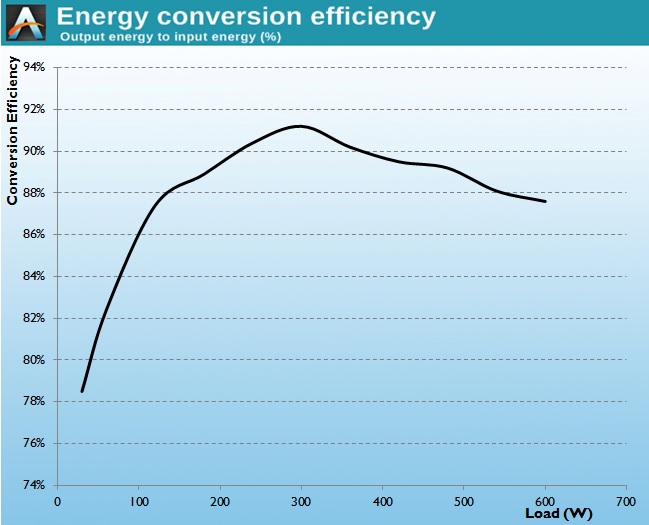
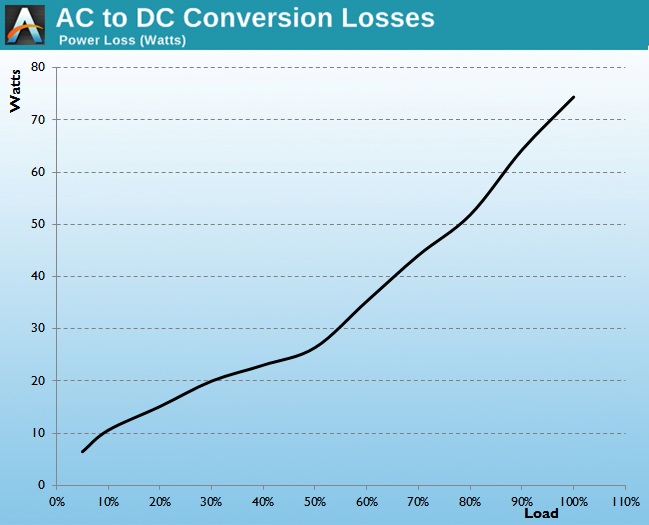
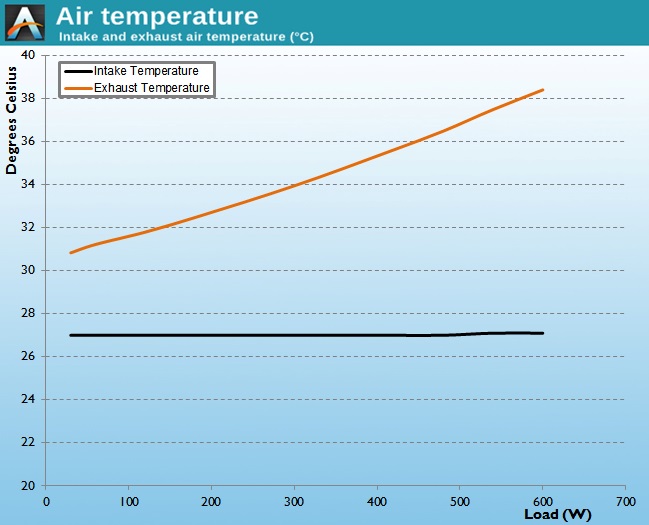
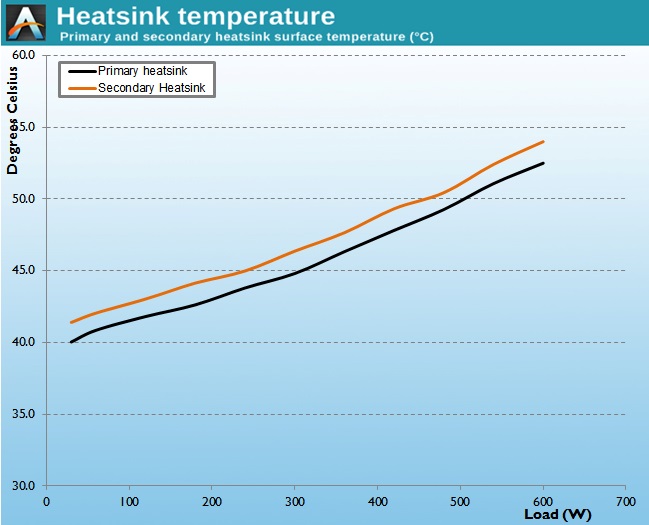
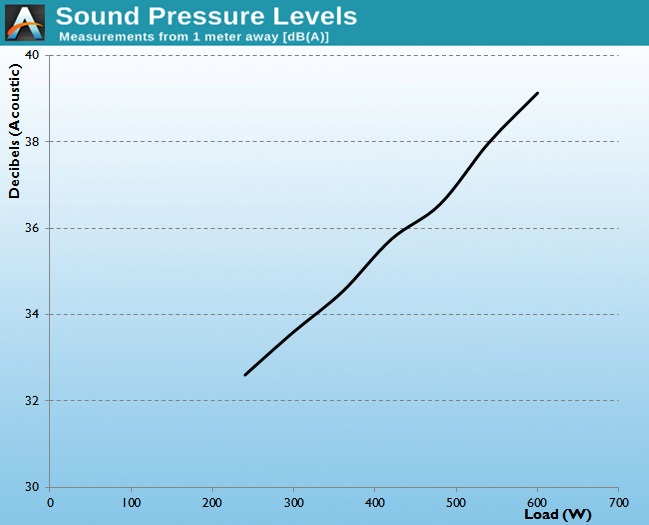








20 Comments
View All Comments
duyfken - Friday, August 21, 2015 - link
Any chance of reviews on the Corsair SF600 (competing 600W SFX and 92mm fan in the SFX form factor with High Power as OEM) or Silverstone SX500-LG (500W Extended SFX form factor with 120mm fan and again the OEM is High Power)?E.Fyll - Saturday, August 22, 2015 - link
It is very likely, yes. One thing at the time.Corsair's model is not available yet.
duyfken - Saturday, August 22, 2015 - link
Cheers, good news for more informed decisions on (many) future iTX builds :)tonyou - Sunday, August 23, 2015 - link
High Power is not the OEM for SF600 (it was in fact Great Wall) according to Corsair's own personnel:http://www.jonnyguru.com/forums/showthread.php?t=1...
StrangerGuy - Saturday, August 22, 2015 - link
I wish SFX is the new mainstream standard for PSUs. The sheer size of ATX PSUs is wastingso much physical space inside a mITX/mATX enclosure, and the vast majority of users simply doesn't need more than 400W even for a gaming PC with power requirements dropping like a rock since 2011.Or even better, a complete move to a +12V DC PSU standard to cut down even more PSU circuitry and save more space at the same time.
sor - Saturday, August 22, 2015 - link
Most power supplies are more efficient at higher voltage, not less. It would be interesting to see you retest at 120vDanNeely - Saturday, August 22, 2015 - link
He can't. He lives in a country with 220V wall power; which means the only way to get 120V is a huge transformer.sor - Saturday, August 22, 2015 - link
Only because it's a quickie review. It wasn't that long ago that I remember seeing PSU reviews here where they were opening them up and critiquing the internals and choices of components, looking at electrical noise of the switching IC, rectifier, and MOSFETs, etc. I think Anandtech could arrange to test a PSU at both common voltages/frequencies if they wanted to make a good quality review. A desktop variac can probably be picked up for the price of this PSU or less and could be used for many reviews. Or perhaps they employ someone stateside who could run a few tests on the same model.I get that this is just a drive-by review for the weekend that isn't intended to be a thorough or high budget affair. And I don't really even know if they're the type who just ships free stuff from manufacturers to your house to try out or if they have invested a couple of hundred into various lab equipment on regular occasion to do proper testing, but I feel like review sites used to lean toward the latter and we are losing that slowly in favor of review mills.
At any rate, the only reason any of this came up is because the reviewer mentioned that it didn't meet 80 plus. That seems like an interesting thing to dig into, because one familiar with power supplies would expect the situation to get worse at 120v.
E.Fyll - Monday, August 24, 2015 - link
Actually, that is entirely wrong. I do have a VARIAC and I do use it to get an exact 230 VAC output. However, dropping the voltage down to 110/120 Volts is just false/fake testing. You see, VARIACs convert the voltage output but do nothing about the frequency. Whoever is claiming to be using a VARIAC for dual voltage testing, sorry, that's just wrong.To perform testing at any voltage/frequency, you need a programmable power source. One in the range of 2-3 KVA costs about $25.000. I do not think that I need to explain why I do not have one.
home improve - Tuesday, August 25, 2015 - link
Depending on the games an individual plays, it is advisable to a high-end graphics card for several reasons such as stereoscopic 3D...<a href="http://www.myhomeimprovementsolutions.com/best-gam... games</a>